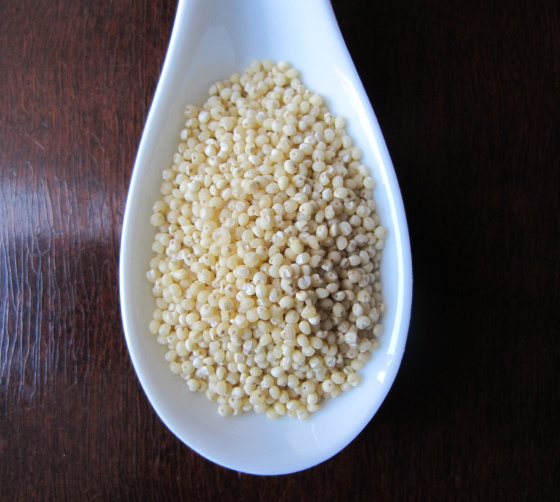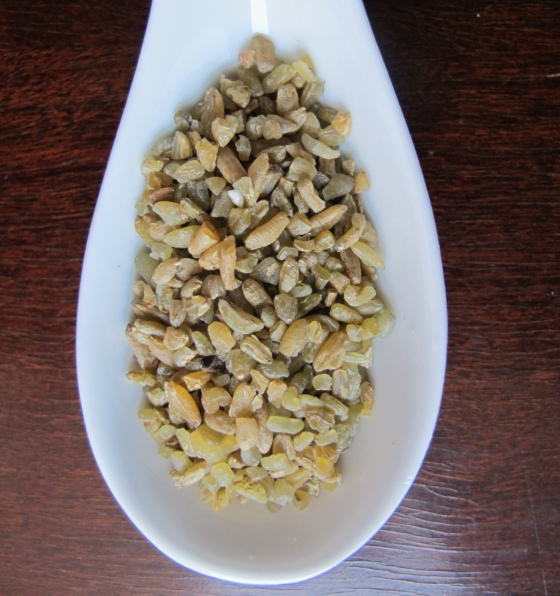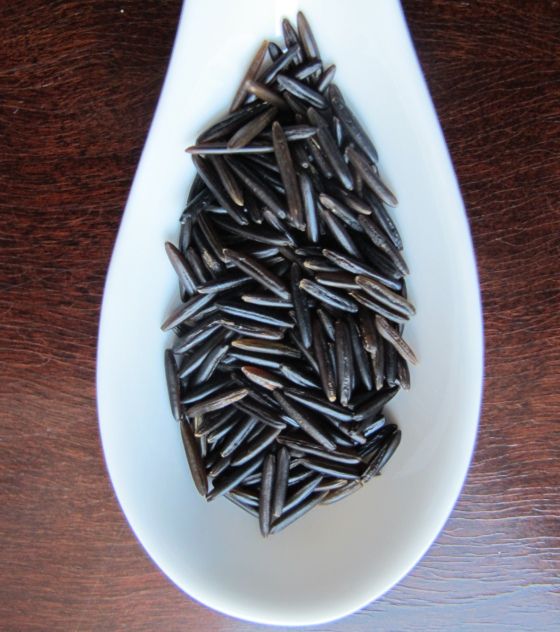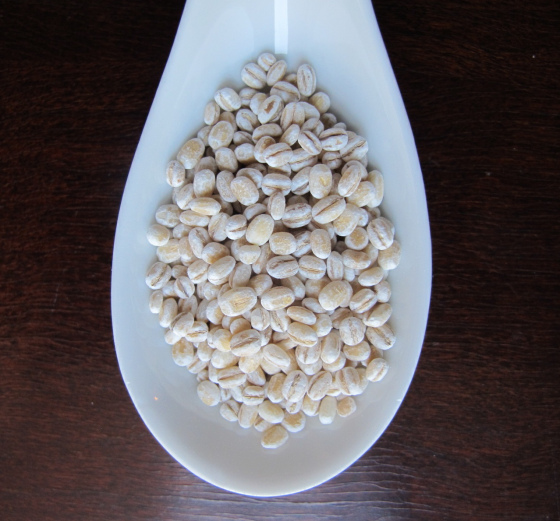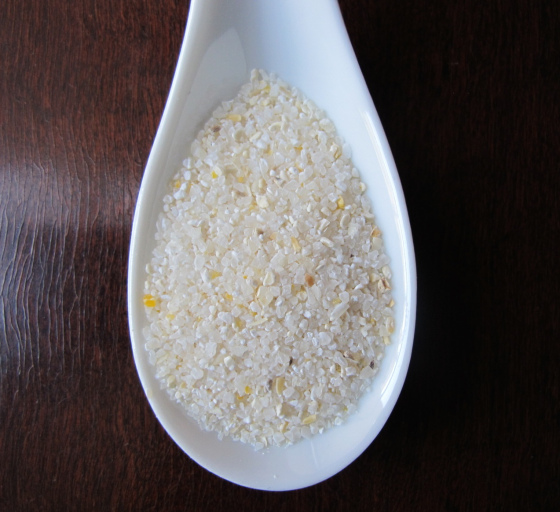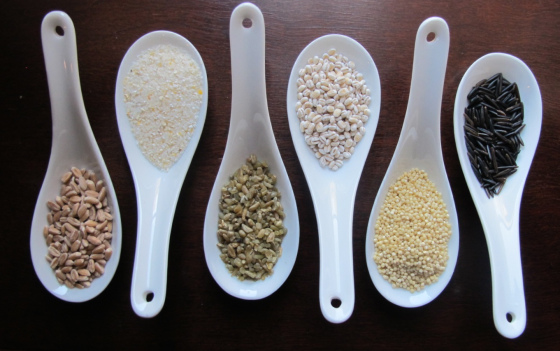
Christine’s Whole Grain Classics
Our Food Editor Christine is sharing with us her favorite grains. Because she’s awesome like that.
My friend Annie and I had lunch this week to catch up and hash out life’s big issues over salad. It has been a long winter for all of us, but she had just changed jobs, travels all over the world, is dealing with a family health crisis and is feeling the effects of stress. She told me she had been consulting with a nutritionist to try to give herself a physical boost, to try to make some healthy adjustments to her diet so that she’s better equipped to face everything she has to deal with. She joked that she was eating nothing but quinoa and kale and was feeling good but a little culinarily one-note.
I love kale and I can take or leave quinoa, but boredom with your diet is a good way to end up at the bottom of a bag of Cheetos so I always keep a (some might say excessive) variety of whole grains in my kitchen. They each have such different flavors and textures and characteristics that it keeps me interested. The problem is, as Annie said, if you’ve never tried a grain, you don’t know if you like it until you’ve bought that 20 ounce bag that you try once, and then it sits moldering in the back of the cabinet until it gets rancid and you end up throwing it out.
I decided to put together a little sampler of some of the grains I have at home for her, enough for a serving or so for her to try out before she buys whole bags of them and thought I’d share it with all of you too. I’ve done several recipe posts for whole grain salads but haven’t really put together my “Classics” list for a post. So here are a few of my favorite grains.
Farro: “Caesar marched his army to the sea on farro” our innkeeper in Italy told us. Emmer farro is an ancient Roman grain variety that is nutty, earthy, chewy, with a similar texture to but not as sweet as barley. It cooks in a lot of water and keeps separate grains so it’s great to toss with other things for a hearty whole meal salad. I especially love farro with sautéed mushrooms. Cook it at a 4:1 ratio of salted water to grain for 20-25 minutes or until it is as tender as you like it in a covered pot. Drain any leftover water. Low in gluten, high in complex carbs, with protein, fiber, lignans, and antioxidants, it can form the basis for a hearty, healthy vegetarian meal.
Millet: Millet is a quick-cooking, fluffy grain with a toasty, corny flavor. It is probably one of the most widely cultivated ancient staple grains in the world, a drought resistant crop, but most of us tend to think of it as birdseed. I like it in just about any dish where cous cous would be appropriate. It is gluten free and alkaline which can help balance the body’s tendency toward acidity. I toast it in a pan with a little olive oil, coconut oil, or other fat, add 2:1 ratio of boiling water to grain. Cover the pot and cook for about 15- 20 minutes over low heat until it is fluffy and dry. This is the same technique I would use for a long grain rice. Use a fork to fluff the grains apart.
Frikkeh: Also spelled “freekeh” “frikeh” and “farik”, frikkeh is a green wheat grain that is toasted and (usually) cracked like bulgher wheat. It has a subtle hint of toasty smokiness and one of the most intriguing delicious grain flavors I’ve run across. It is used a lot in Levantine and North African cuisines, seasoned with cinnamon and coriander in pilafs with toasted pine nuts, as a stuffing, and with lamb. I even love it plain, salted and buttered instead of rice. It is super high in fiber and has selenium, potassium, and magnesium. Cook it with a little more than 2:1 water to grain ratio for 15-20 minutes for the cracked grain version.
Wild Rice: I included wild rice because it is actually a grass seed from the Zizania palustris species rather than true rice. In some part of North America Native American people harvest it by hand from canoes where the method of harvest is proscribed by tribal law. Wild rice has a tough outer sheath covering the inner grain that “pops” as it cooks. Second only to oats in protein, it contains b vitamins, lots of dietary fiber and is gluten-free. It has an earthy, irony flavor, which subtly hints that it was grown in water; it reminds me slightly of kombu or kelp. I pre-soak wild rice for a couple of hours before cooking it in at least 6:1 ratio of salted boiling water for 30 minutes until the kernels have popped and blossomed. Drain and toss with an intense dressing – I’ve gotten raves over the wild rice and Brussels spouts with mustard dressing I posted in December. It is also good with something tangy and sweet like cranberry (another native North American plant).
Pearled Barley: I feel like I almost take pearled barley for granted it has been a part of my diet for so long. For me, pearled barley goes in vegetable (or vegetable beef) soup. The pop of the grain adds textural contrast, the sweetness balances flavors, and the soluble fiber (same as in oats) thickens and enriches the soup’s broth. Although it is pearled which means that some of the hull has been buffed off, (meaning it isn’t technically a whole grain) it is much quicker cooking and still has lots of healthy fiber. This sweetness and fiber also makes it great (and filling) for breakfast with fruit and a little brown sugar. I usually just throw it into soup without measuring the ratio, but about 4:1 and a 15 minute simmer works for breakfast barley.
Hominy Grits: You know I can’t make s list of grains without talking about grits! As a southerner, grits are essential for my mental, physical, and emotional well-being. Nothing soothes the ruffles feathers of my soul like a warm bowl of buttered grits; it was the first meal I cooked when I moved here to New Jersey. Hominy grits are made from dent corn, which has been treated with an alkali (with masa harina it is called “nixmatalization”), a process that makes more of the corn’s nutrition accessible during digestion. I like white, organic, stone ground grits, and keep them in the refrigerator to prevent rancidity since I usually have to mail order them in larger amounts than I can use up quickly. 4:1 salted water to grits and butter is the classic bowl of grits. Top it with a poached egg and some sautéed greens and you have a comfort in a bowl.
Honorable mention: although I don’t use them in the same way I use the other grains, both chia and flax seeds are a regular part of our diet. Both are high in omega 3 vitamins and cholesterol controlling fiber. I treat them more as additions too, rather than main elements of meals, added to smoothies, yogurts, and granola.
The fiber in all of these grains is important for maintaining healthy cholesterol levels, healthy blood sugar levels (instead of the peaks and valleys caused by simple carbs) and healthy intestinal bacteria which is critical for digestion and a healthy immune system.
Additional resources:
Wild rice: http://en.wikipedia.org/wiki/Wild_rice
Farro: http://www.takepart.com/article/2013/03/20/jane-says-farro
I buy my grain from these sources:
Check out Christine’s delectable blog or follow her on Twitter.



